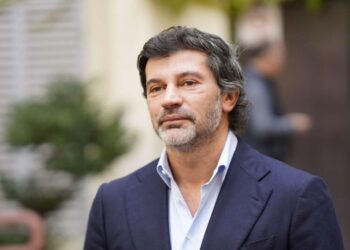This week in the conflict between Russia and Ukraine, ferocious fighting was marked by tactical advances, drone warfare, civilian suffering, and heightened diplomatic intrigue.
On the ground, the Dobropillia offensive remains one of the most critical flashpoints. Beginning on August 11, Russian units mounted a ground assault northeast of Rodynske, severing the vital highway from Dobropillia to Kramatorsk. Penetrating deep into Ukrainian defenses, they captured several villages in their initial push—unleashing what analysts called Russia’s biggest one-day advance since May 2024.
Over the following days, Ukraine’s 1st Azov Corps and reinforcements stabilized the front, recapturing settlements, including Hruzke, Rubizhne, Vesele, and Zolotyi Kolodiaz, by August 17. Official reports detail at least 271 Russian soldiers killed, 101 wounded, and 13 taken prisoner, underscoring the tremendous cost of the offensive.
As of August 15–16, intense fighting persisted. Ukrainian forces continued clearing positions northeast of Dobropillia, notably in Vesele and Hruzke. But Russian counterattacks remained fierce—seeing them attempting to advance northwest of Poltavka and northeast of Volodymyrivka, while launching flanking maneuvers toward Sofiivka and probing Shakhove from multiple directions. Despite the onslaught, Ukrainian counteroffensives began threatening the very base of the Russian penetration near Mayak, signaling a potential turning point.
In Sumy Oblast, towns like Okhtyrka again came under drone attack. Russian forces launched 93 drones and two missiles, wounding 14, including a family with three small children. At the same time, Odesa’s port and energy infrastructure suffered strikes that ignited fires at fuel facilities and damaged SOCAR oil depots and gas transport lines in Poltava—reinforcing the brutal reach of Russia’s strikes on civilian infrastructure.
Tuesday night’s massive drone-and-missile barrage—Russia’s largest in weeks—was particularly devastating. Deploying 270 drones and 10 missiles, the attack killed at least 14 people, injured over 50, and included a tragic whole-family loss in Kharkiv. July had already been the bloodiest month yet, with 286 civilians killed in one month alone—signaling escalating civilian vulnerability far from the frontlines.
Beyond these key hotspots, the Institute for the Study of War reported modest Ukrainian advances near Kupiansk and Toretsk. Russian forces continued pressing near Lyman, Toretsk, and Pokrovsk—especially intensifying operations in eastern and central Pokrovsk. More than 110,000 Russian personnel are still massed in the Pokrovsk sector, attempting to probe Ukrainian defenses using small fire teams and armored vehicles. Ukrainian defenders reported persistent probes, infiltration attempts, and efforts to encircle critical towns—in particular, Ukrainian forces repelled incursions near Pokrovsk itself.
Meanwhile, the northeastern Donetsk campaign has seen enduring tension. Russian forces captured Bilohorivka in early 2025 and continued to press westward toward Siversk. These offensives generated brutal urban fighting, with incremental advances near Hryhorivka and Serebrianka, though Ukrainian troops held defensive lines despite repeated assaults. Recent days have revealed tactical nuance across multiple fronts. In the Pokrovsk–Dobropillia axis, Russian troops have shifted to using smaller assault teams—one to two soldiers each—camouflaged with thermal cloaks and greenery, attempting to bypass drone surveillance and infiltrate defenses. They’ve also begun deploying motorcycles for stealthy flanking raids.
On August 16, Ukrainian forces retook Andriivka-Klevtsove near Velykomykhailivka, indicating offensive pushback outside Donetsk. At the same time, geolocated material confirmed that Russian units were advancing east of Velykomykhailivka toward Voskresenka, Oleksandrohrad, and Myrne—and to the southeast toward Vilne Pole and Maliivka—suggesting a multi-pronged effort to widen the battlefield. Ukrainian drone crews and artillery successfully targeted these advances, frustrating Russian attempts to broaden control.
In Kharkiv’s Kupiansk sector, continued skirmishes along the Oskil River have seen Russian forces maintaining bridgeheads and launching probing attacks, even as Ukrainian troops strive to contain the advance. Collectively, these developments reflect a grinding, attritional war characterized by fleeting gains, localized counterattacks, and technological adaptation on both sides.
This week highlights the dual nature of the war: while diplomacy churns above, the frontlines evolve in dust, fire, and unwavering resistance. Ukrainian forces continue to contest every meter, repelling assaults across Donetsk, Sumy, Kharkiv, and Lyman, while sustaining heavy civilian tolls under relentless bombardment.
As the battle rages on, the diplomatic stage has also witnessed significant developments this past week, particularly surrounding US President Donald Trump’s discussions with Ukrainian President Volodymyr Zelensky and key European leaders. These meetings took place on August 18 in Washington, where Trump emphasized security guarantees for Ukraine, especially in the realm of air support and intelligence, but notably excluded the prospect of US troop deployments or Ukraine’s NATO membership.
In the talks, Trump acknowledged the devastating toll of the war on Ukraine, but continued to take a more cautious stance compared to his European counterparts. His support for Ukraine was conditional, focusing mainly on US air defense systems and airstrikes as potential assistance—while dismissing direct military intervention. Zelensky expressed gratitude for the support, but remained firm in his position: Ukraine’s sovereignty and territorial integrity cannot be bargained away.
Several European leaders, among them German Chancellor Olaf Scholz, French President Emmanuel Macron, and British Prime Minister Keir Starmer, also attended the meeting, where Western security guarantees were discussed at length. However, despite their pledges for continued arms supplies, they too seemed to have reservations about offering full NATO membership to Ukraine in the immediate future. This has sparked criticism from some Ukrainian officials, who argue that such guarantees are insufficient to deter Russian escalation.
The meeting ended with no clear breakthrough, though all sides acknowledged the critical importance of diplomacy and long-term peace talks, which some analysts believe will need to involve territorial compromises to end the war. However, within Ukraine, there is widespread resistance to any settlement that might involve giving up disputed regions like Donbas. President Zelensky, speaking to the press afterward, reiterated that the ultimate goal remains Ukraine’s full restoration of its borders and a halt to Russian aggression.
In Moscow, the response to the diplomatic meetings was dismissive. Russian Foreign Minister Sergei Lavrov called the talks an exercise in “inclusiveness” that only perpetuates an “illusion of peace.” He pointed to Ukraine’s land-for-peace offers as unrealistic, criticizing any effort that does not include Russia in the conversation. Lavrov’s statements mirrored Russian President Vladimir Putin’s increasingly aggressive rhetoric that Ukraine should surrender the contested Donbas region to avoid further suffering, which has fueled concerns about future escalations.
While these diplomatic talks take place on one front, the battlefield rages on, with both sides determined to maintain their territorial integrity. The potential for compromise seems distant, as political leaders on both sides brace for the next phase of the war, which could involve more than just military might.
Compiled by Ana Dumbadze














